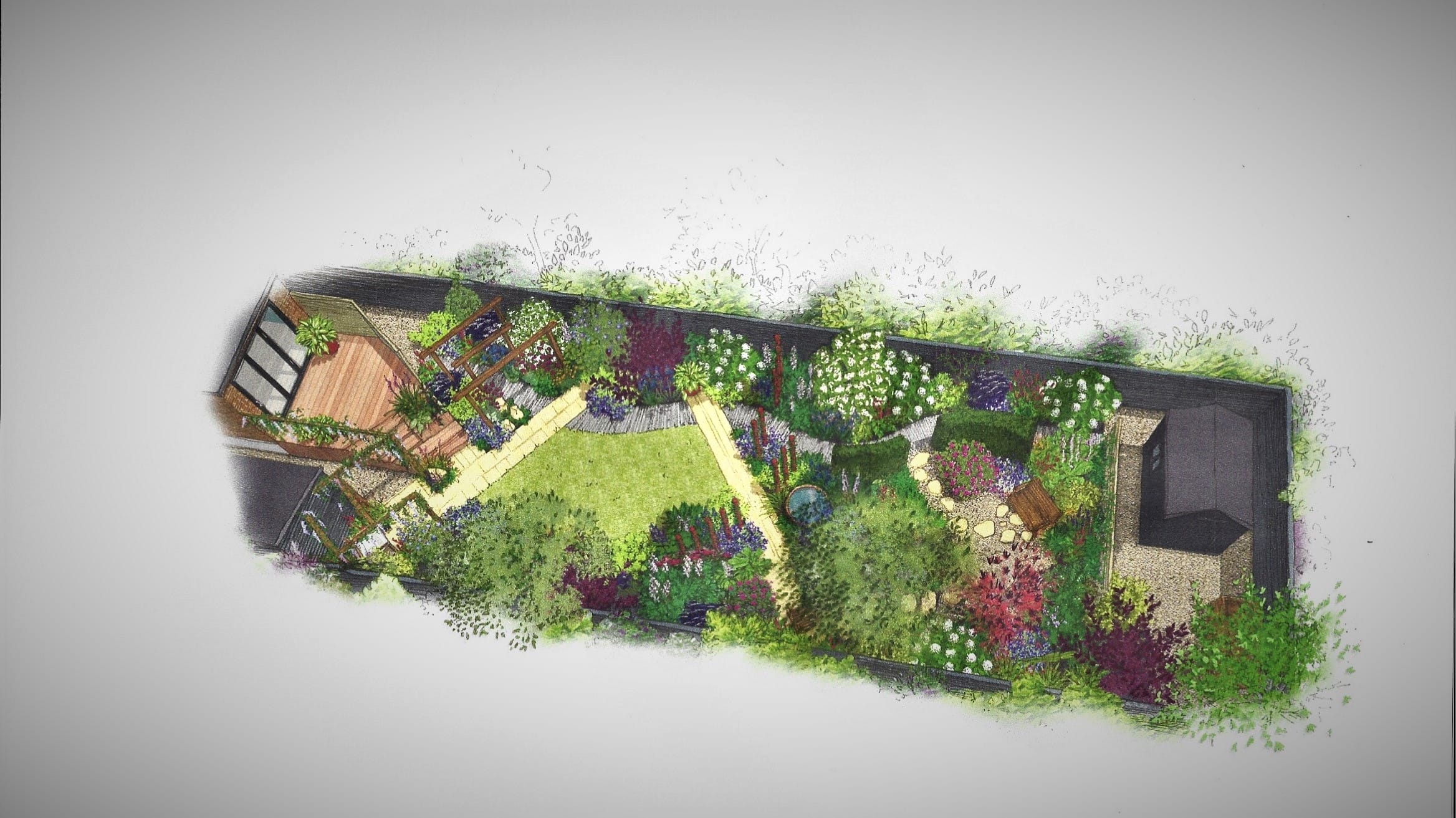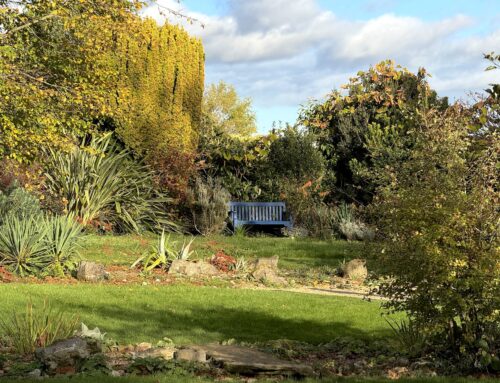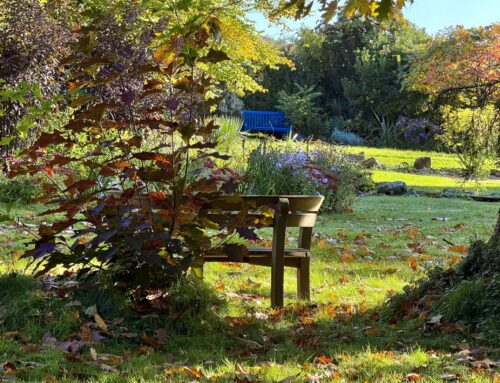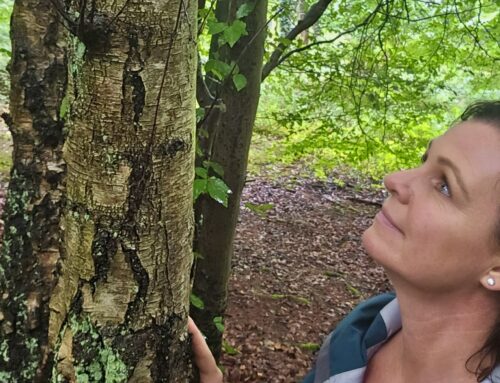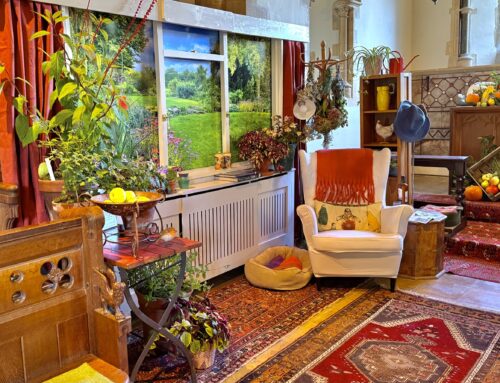ABOVE: David’s garden in Britain.
Denmans Garden was the place internationally renowned landscape designer John Brookes MBE called home for the latter part of his life. On 27 March, celebrated garden designer, author, and RHS judge David Stevens will be at Denmans Garden to deliver a special John Brookes Lecture — ‘John Brookes and Beyond’ – along with a guided walk around the Garden.
Of David’s 26 RHS Chelsea Flower Show medals, 11 were gold, and in 2021 was awarded Lifetime Achievement Award from The Society of Garden Designers, and award that given to those who have made an outstanding contribution to the profession.
Ahead of his visit to Denmans we talk to David about his career and his thoughts on John Brookes.
‘My task is to facilitate, never impose. It is your garden and your space; we are partners in creating a design that is perfect for you and your family.
David Stevens, Landscape Architect and Garden Designer
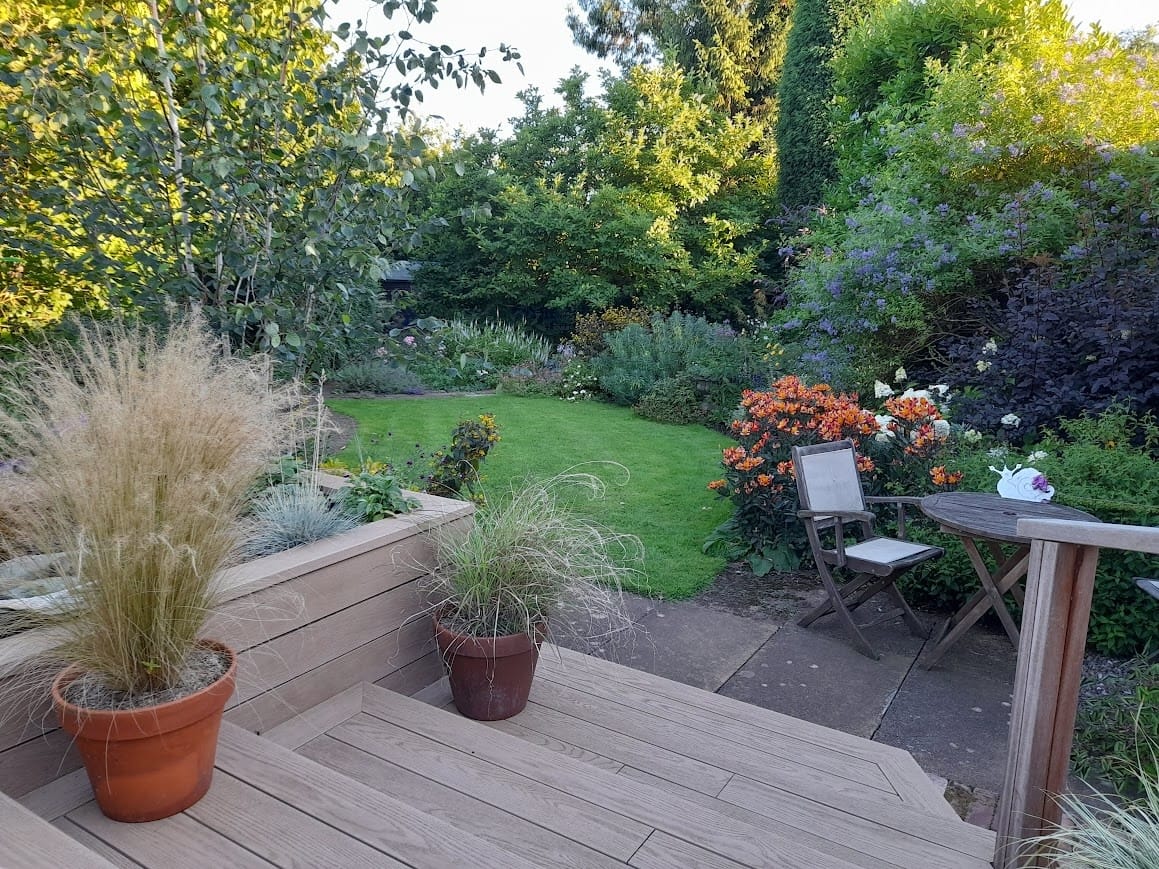
Steps leading down into the garden.
We live and work in the West Midlands but have had many homes both in this country and France, creating gardens in all of them.
Our present garden is something of a culmination of my design philosophy and a continuing search for new ideas, both in terms of layout and planting. The garden adjoins a 1930s detached house and in many a garden I work on I often find a whole range of materials that are simply discarded in favour of a complete makeover.
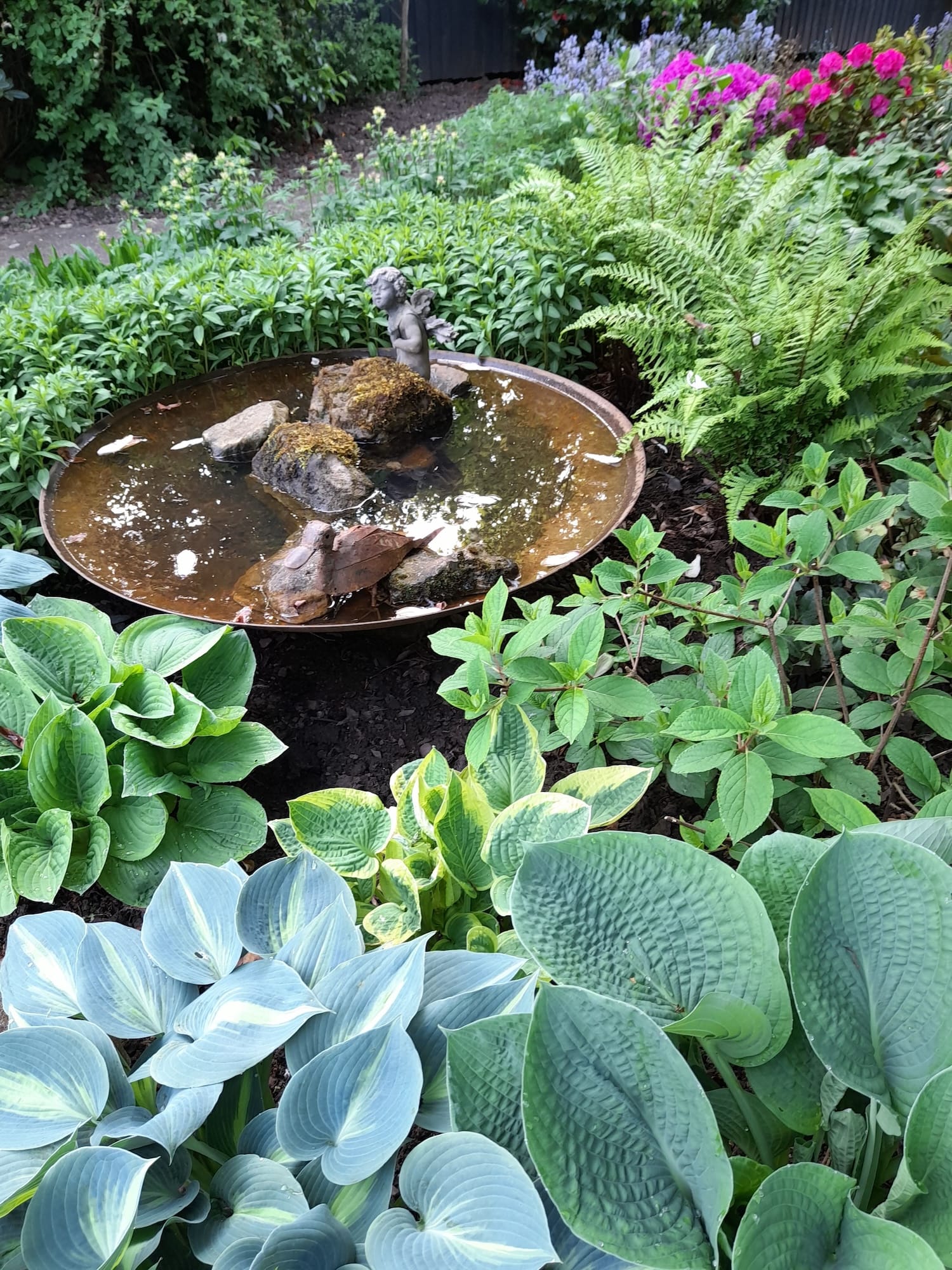
The ‘Hosta Bowl’ in my garden.
With some imagination they can be used again to good effect, not only making a considerable financial saving but eliminating the need for new surfaces and the implications of an additional carbon footprint. There is another factor at play here and I am often aware of the history or ambience of a place in terms of time. Many gardens are passed on from owner to owner and like houses, we are the guardians of these. To start from scratch destroys everything that went before and if we understand and take this into consideration a whole new range of possibilities opens up to us.
This is just what I am doing now with the old stone and other paving which was buried and then discovered. Planting revolves around the fine Magnolia and other structural shrubs. All of this we have kept and reused, not only saving a fortune but creating a garden that was born out of the old. This embodies an environmental outlook with a minimal carbon footprint and planting used for maximum biodiversity and pollinators.
****
As a child, and up to the present day, I have always been able to draw, and draw well, which gave me the skills of observation and detail. I drew everything from buildings to maps, I couldn’t stop. I can’t stop now!
My career has been a voyage of discovery, and it took a while to find the ship! After leaving school I embarked on a number of jobs, including marine underwriting; a short stint in the police, which was a disaster; a commission in the Royal Marines, which I did not take up; and finally working as a technical rep for a company producing gold leaf which taught me invaluable people skills. Whilst there I met a landscape gardener who asked me if I could draw up some designs for him. The die was cast, although the designs were appalling!
I joined his company, drove the van, and went to plant auctions where I had no clue as what I was buying. We sold them at a market. I visited customer’s gardens, ran the shop, drew plans and had fun. I loved it all, and I learned. My employer went bust and I formed my own little garden company, with one man, laying paving and turf, mowing lawns, trimming hedges and doing anything to keep us afloat. But I simply wanted to be a designer and enrolled at Thames Polytechnic to study landscape architecture. And it was a revelation.
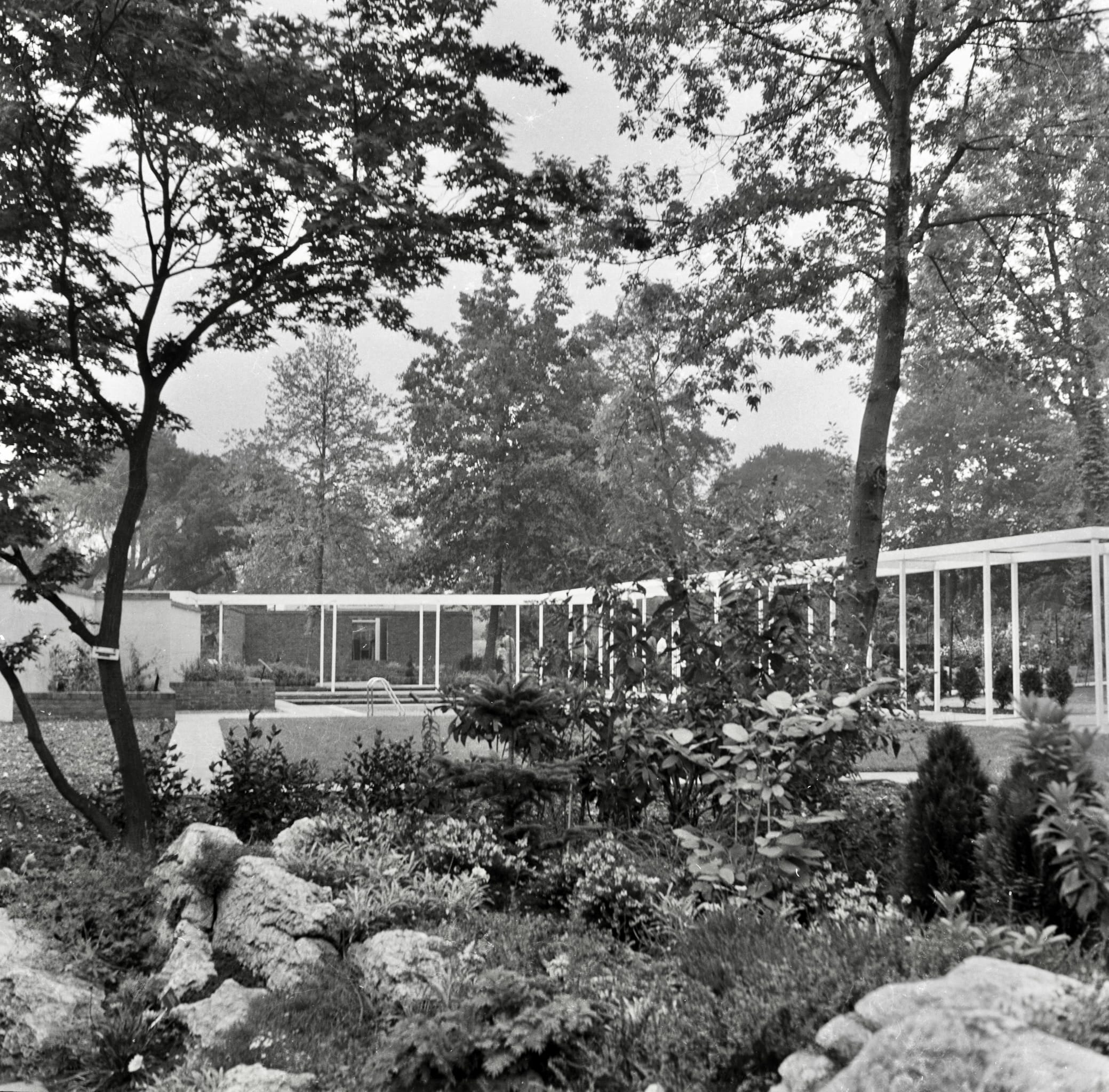
Syon Park in Surry.
Not only did we have fantastic tutors, all of whom were well-known landscape architects, but there was a library that was a gold mine of architectural and landscape works, and among it was the newly published ‘Room Outside’ (Thames & Hudson, 1969) by John Brookes. It summed up all the fledgling thoughts I had, it made sense, and it was good! I wrote to John and he agreed to see me and to bring my portfolio – horror! Well, we got on, we got on well, and John was kind enough to feel there might be some merit in my drawings. He offered me a position as his assistant at Syon Park, in Brentford, where he had recently been employed as a consultant. Well, that was it, the National Exhibition of Gardening, all the nurseries and suppliers, a Capability Brown Park, John as a boss and mentor, what else could a young designer want – I was away!!
Syon Park closed after I had worked there for three years and John and I parted company, firm, and continuing friends. My choice was simple, either go into the landscape department of a local authority, boring but safe, or enter private practice, no contest and I set out on a life adventure that has taken me all over the world and allowed me to design gardens in every continent except Antarctica!
John of course was a huge influence, but many others, mostly architects and landscape designers. Frank Lloyd Wright who seamlessly integrated the built and natural environments, Corbusier, Neutra, and the early twentieth-century architects as well as the Bauhaus painters and designers. Ben Jacobsen, one of the finest landscape architects of the time, was our tutor at College was a guiding light and inspiration.
****
Looking a little further back, Lutyens and Jekyll were a superb team, seamlessly linking house and garden while perhaps a designer who influenced me most was Laurence Halprin, who started out in the office of Thomas Church before forming his own office and practice in San Francisco.
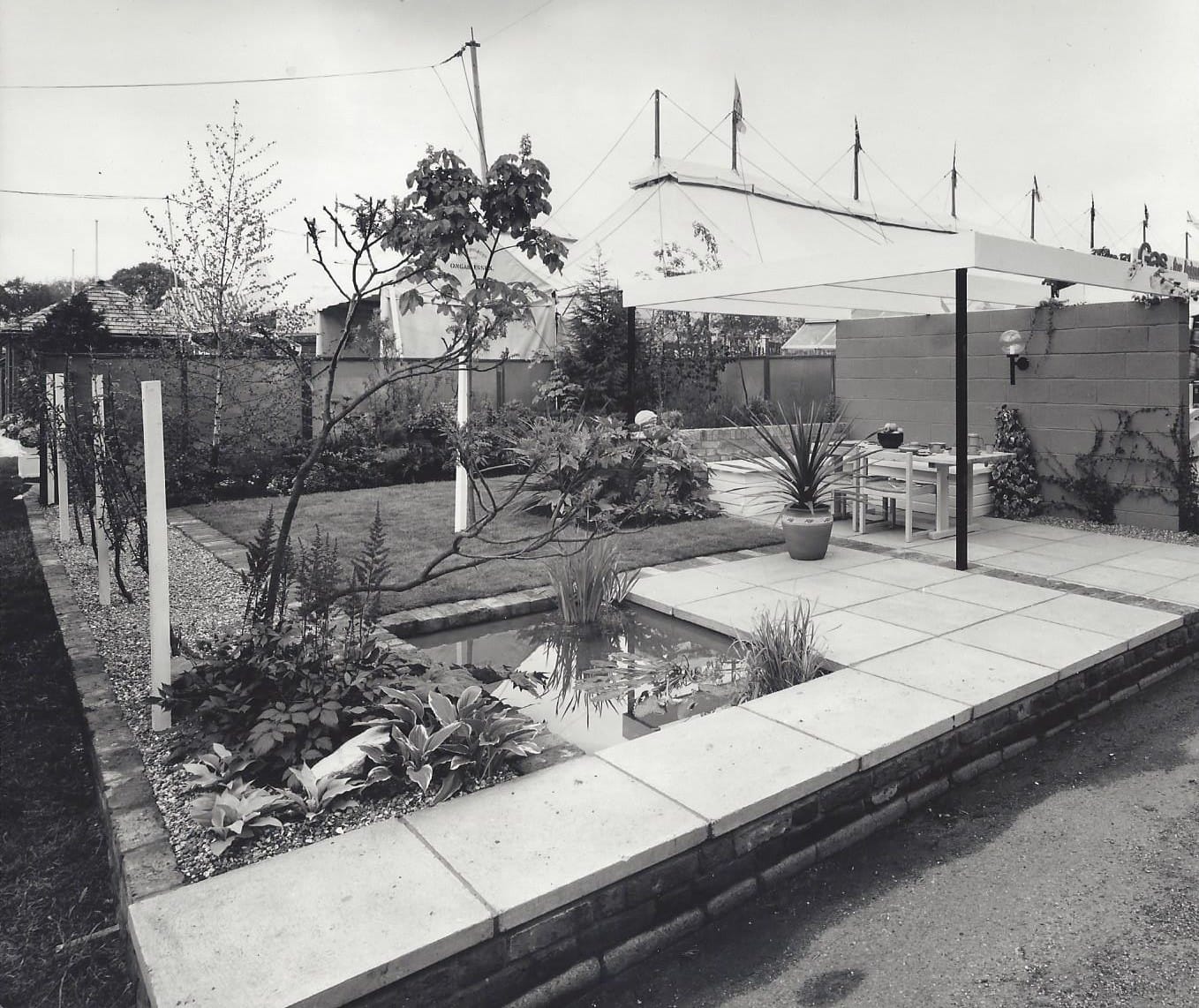
My first Chelsea Flower Show Exhibition Garden in 1972.
My first garden at the Chelsea Flower Show in 1972 was the start of a long journey of creating show gardens around the world. I was still working with John, and of course, it showed, a little ‘outside room’, complete with overhead beams, crisp paving, and a pool. Planting was minimal and so was the budget, but it taught me a lot. I was lucky enough to become the landscape consultant for Homes and Gardens which gave me a wonderful chance to work for all kinds of clients, from the rich and famous to simply people who wanted a garden that really suited them.
Sometimes it’s not just the garden but the owners, and Bobby Moore, the England football captain was just the best person to work with, open to ideas and full of enthusiasm, a gentleman in all ways. Neither is it the desire for a large fee, which I find distasteful, and I’ll always remember designing a little courtyard for an elderly lady in South London. She had saved up to have me visit and create something for her, which I did, but made no charge, it didn’t seem right.
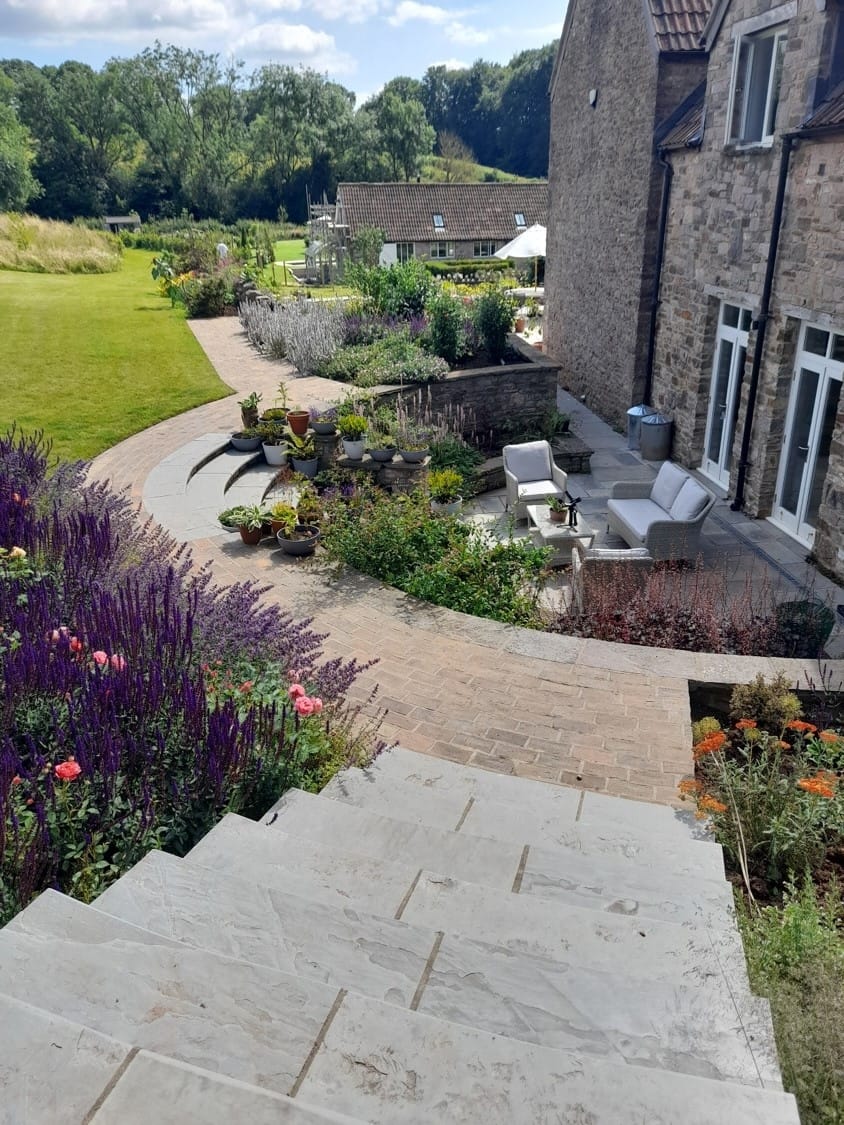
Above and Right: Mendip Garden
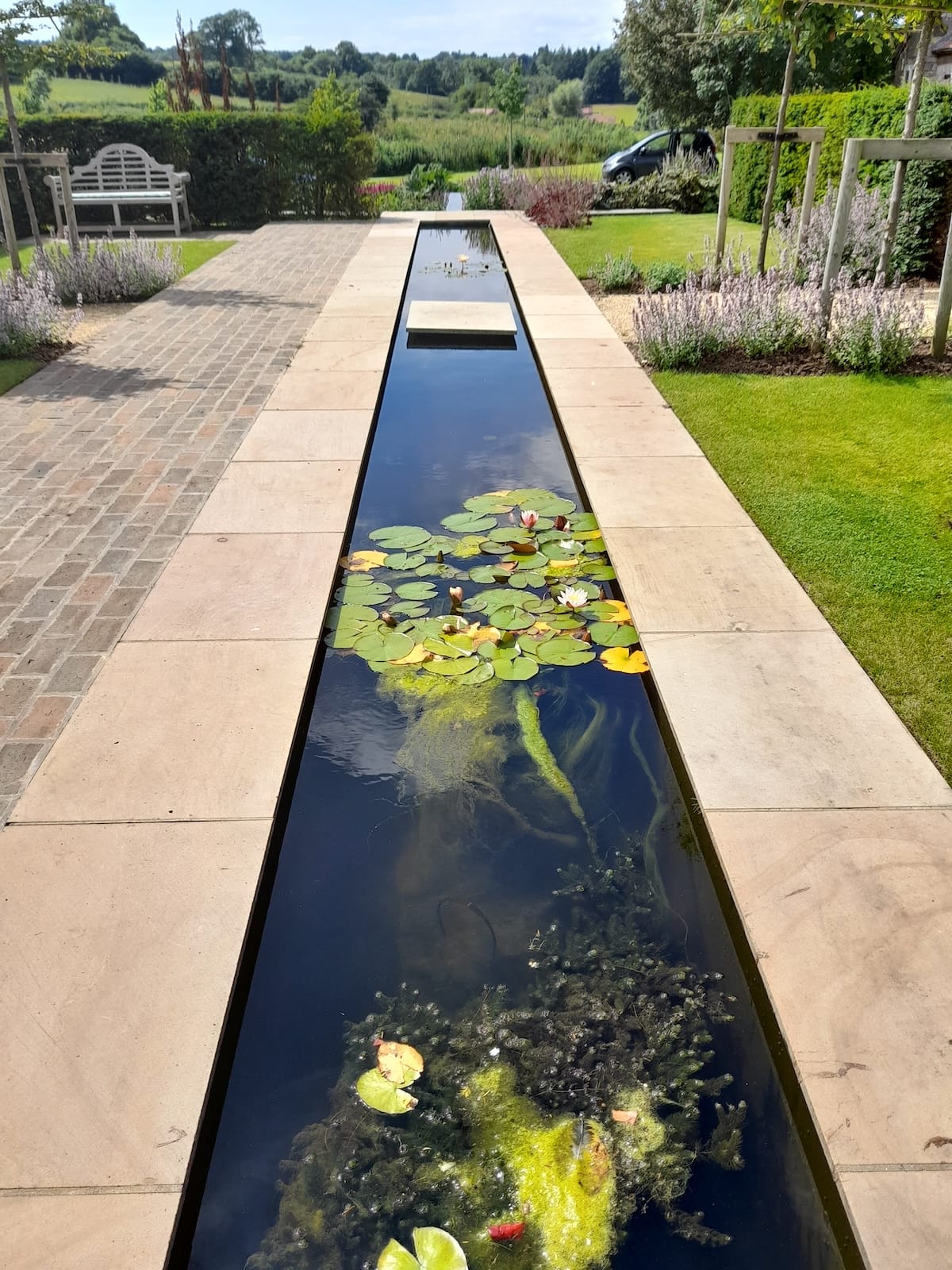
****
One garden that really stands out is set in the Mendip Hills, completed not long ago. Some clients have deep pockets but perhaps not the best of personalities. In this case, it was quite the opposite, many acres, looking out and embracing the landscape with clients who were sensitive, understanding, and completely down to earth. As a result, we created a wonderful garden that tied house and landscape together, and that’s the point, it’s not just my garden, but very much theirs.
****
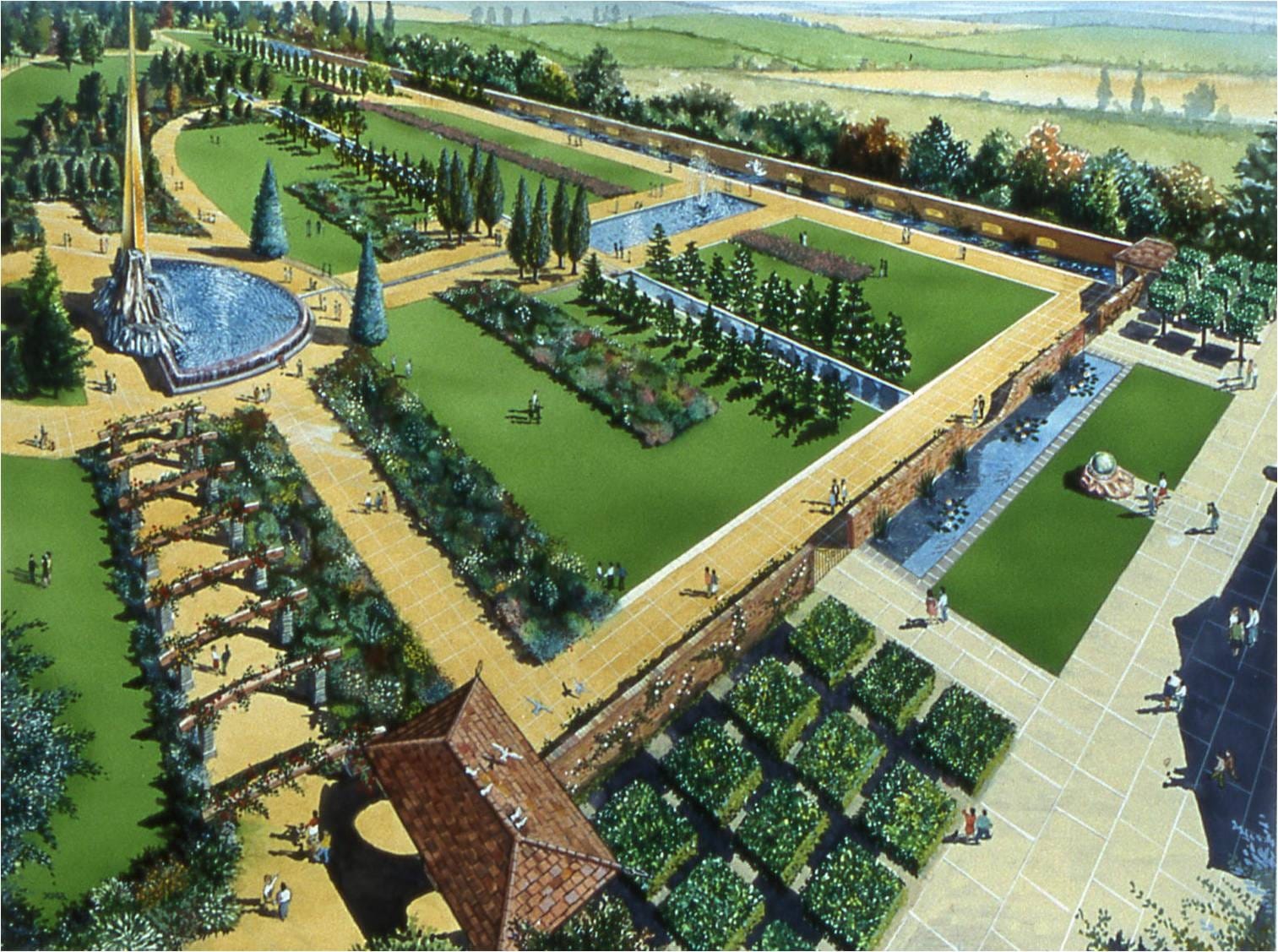 A final thought is the fact that some schemes never come to fruition and that for me was a Commemorative Garden for Princess Diana, as well as gardens for The Queen and The Queen Mother. These were all to be built at the Royal National Rose Society at St. Albans. They received Royal approval and fundraising was well underway when the Twin Towers attack happened in New York. Funding was primarily coming from America but dried up almost immediately. The project never got built but I have walked around that garden in my mind a thousand times. Maybe one day it will come to fruition.
A final thought is the fact that some schemes never come to fruition and that for me was a Commemorative Garden for Princess Diana, as well as gardens for The Queen and The Queen Mother. These were all to be built at the Royal National Rose Society at St. Albans. They received Royal approval and fundraising was well underway when the Twin Towers attack happened in New York. Funding was primarily coming from America but dried up almost immediately. The project never got built but I have walked around that garden in my mind a thousand times. Maybe one day it will come to fruition.
****
I’m currently working on all sorts, and that’s the point for me. I find these days it is often repeat business for clients who I have worked for previously, sometimes it’s the fourth time around! It is fascinating to see how we have both developed and changed, seeing families grow, the gardens get bigger or smaller with the designs changing with them. At the moment I’m working with the daughter of a previous client on her new garden, having previously helped her grandmother! So much design tells the story of those involved.
Another is a large garden in North London, again for old clients. Here the challenge is guiding them toward a more environmentally friendly composition with a minimal carbon footprint, something they, and many clients are starting to embrace and understand.
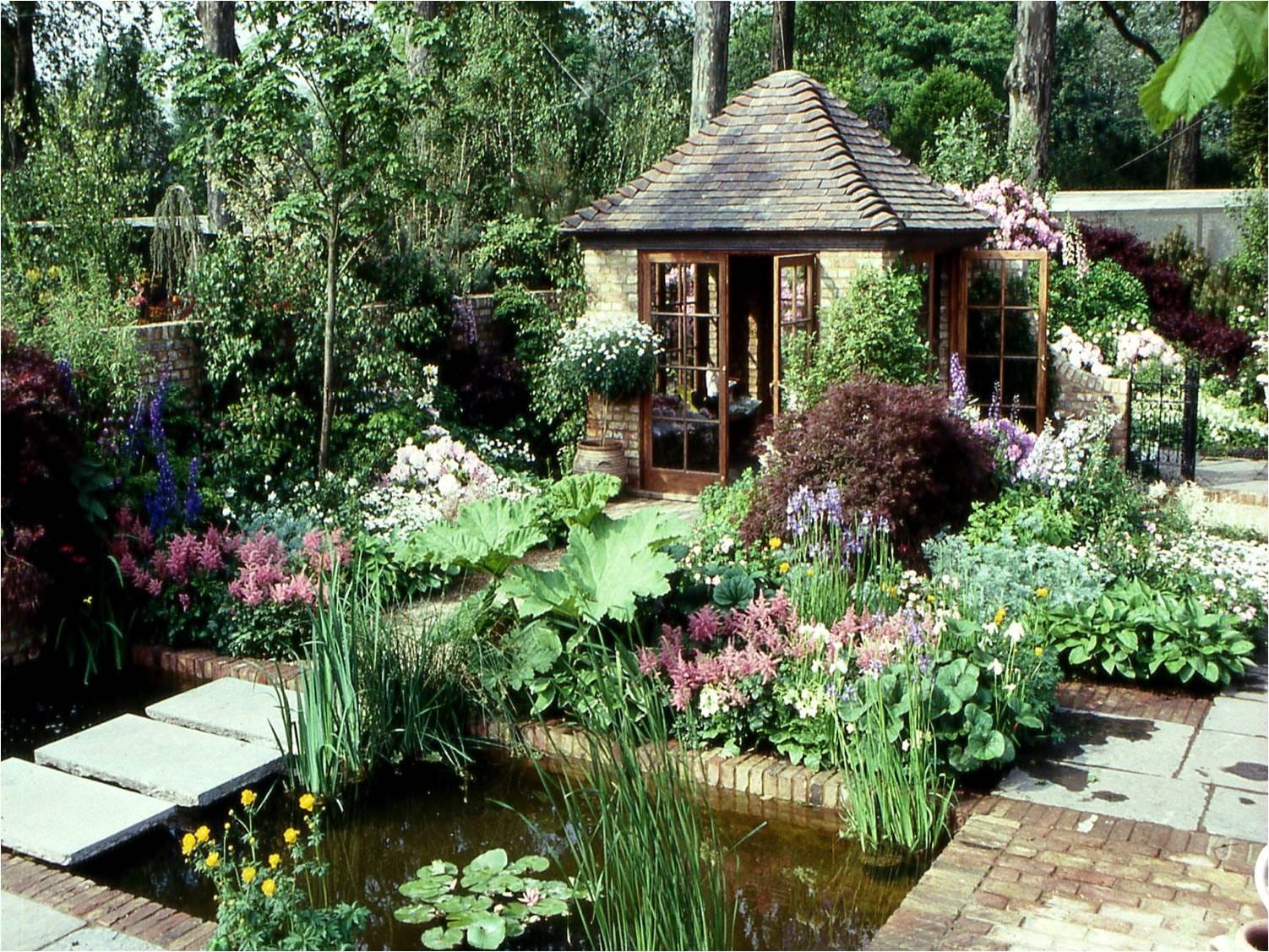
i
Another scheme on the drawing board, and yes, I still draw by hand, as did John, is for a garden centre show garden. Here we again want to emphasise planting that is diverse and full of pollinators, together with hard landscaping using local stone and other materials.
On looking back at my time with John, it’s an interesting proposition. John was ten years older than me, but when I joined him we were both young men, he was 35 and still in the formative years of developing his style. This meant that he was accepting all kinds of commissions, from backyards to an increasing number of much larger and more prestigious gardens. He was also under a good deal of pressure, which naturally comes with recognition. I was his only assistant and as such something of a dogsbody, which I loved. He was living out in Great Haseley in Oxfordshire then and I often acted as his driver taking him from home to the airport or into work. He was also a very ‘hands-on’ designer and took a great deal of time when first meeting a client to really understand who and what they were.
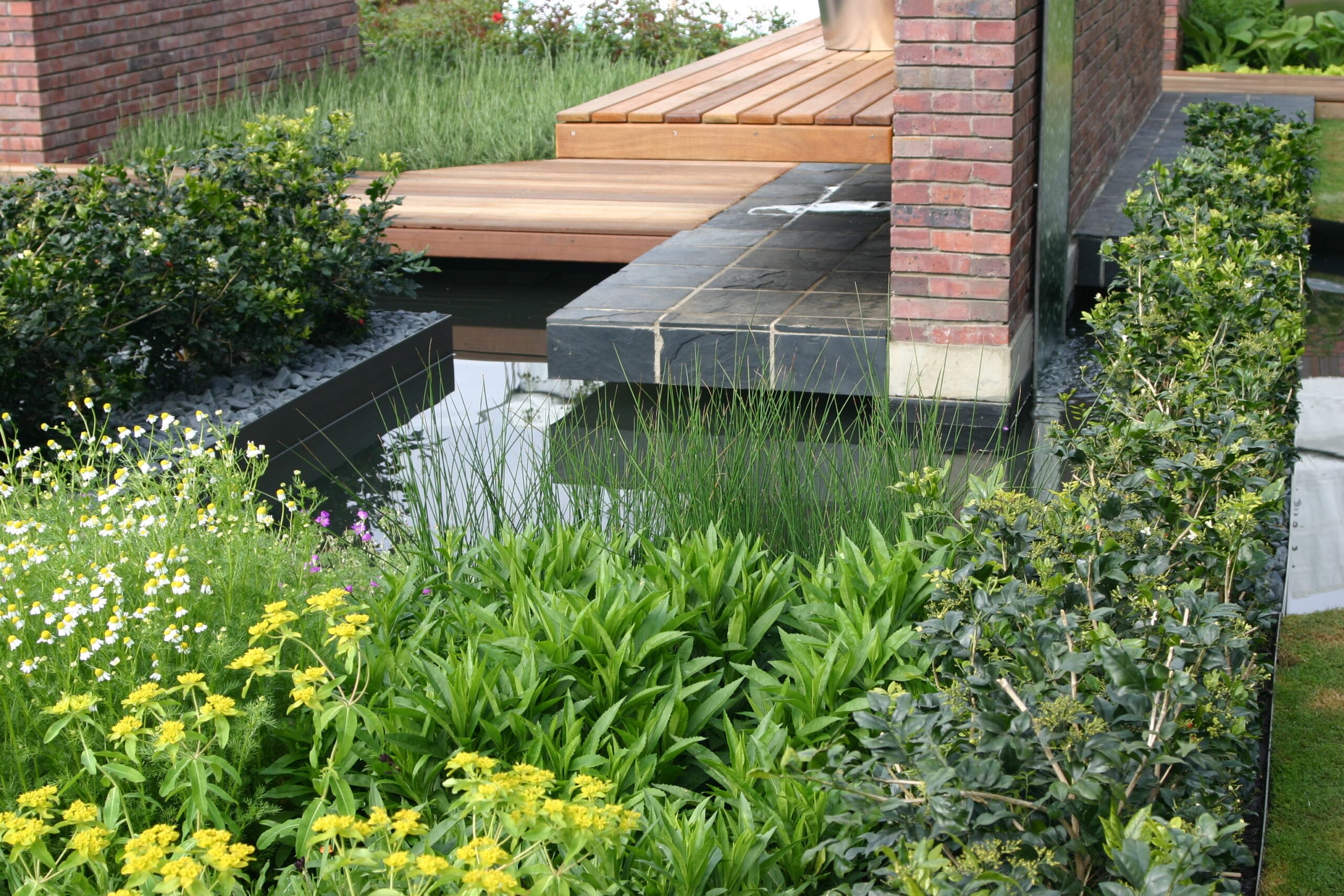
A garden in Cape Town.
He often said, and it’s something I still do today, is not to go into a garden immediately but just see what the house is like. Where do they live, town, country, upland, lowland. What pictures hang on the walls, what are the interior colour schemes, are they modernists or traditionalists, and so on. In other words, it is the people who drive the design first and then you look at the geometry and linkage between house, garden and landscape, with all that these elements offer, together with the needs and aspirations of the owners.
Gardens are art, despite what some people say, and John loved art which was reflected in his design work. His admiration of Mondrian and Ben Nicholson are well documented, and you can see their influence in much of his work, the geometry of the Penguin Books garden and the relationships of circles and rectangles that are echoes of Nicholson. But his love of art was broad, particularly line drawing. John’s drafting style was very simple, easy to read and effective, he constantly said that the simple things work best and overcomplication is the death of a good design, subtlety is of course something else.
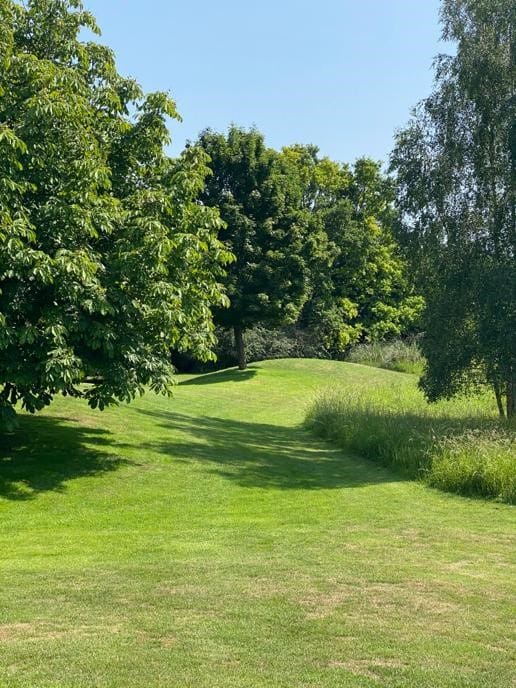
One of my gardens in which I contoured the land.
One of John’s favourite and influential gardens was the Donnell Garden in Sonoma, with its flowing lines that echoed the nearby riverine landscape of winding creeks and mudflats. Many of his schemes embraced this fluidity through the use of geometry and balanced, radiused curves. Denmans could not be further away from California but those sweeping shapes that are divided and surrounded by gravel paths and planting create a feeling of space division, tension, and mystery, which are the key elements in any garden or landscape. Meanders slow you down so that you can appreciate your surroundings, and as you walk further, new vistas and surprises welcome you. A garden is a journey which at Denmans Garden is a voyage of appreciation and discovery.
The teaching I do is a unique experience and incredibly hard work but at the end of each day, in many instances, I get as much from the group as they do from me. Knowledge works both ways and the interaction between us is both productive and rewarding. It may be hard work but it is deeply fulfilling.
John would be thrilled that there is now the time to develop and restore Denmans Garden. It was always a work in progress, there was always a path to realign, a border to keep clean, an idea to explore, and plants to find that would add to the overall composition. The problem was that John was always busy and time was short. Mind you, he was ever critical in his development of the garden, and that is something, as designers we should always be aware of, none of us are perfect and none of us get it right all the time.
Rest in peace old friend, and know that your garden is in safe hands and can only continue to develop and inspire.
For more information on David’s lecture at Denmans ‘John Brookes and Beyond’ on Thursday 27 March and to book tickets please visit our events page:
For more information about David Stevens go to https://david-stevens.co.uk/ https://www.facebook.com/people/David-Stevens/666853205/
For more information, please contact Louise Campbell
louise@denmans.org 07540892364
@denmans_garden

